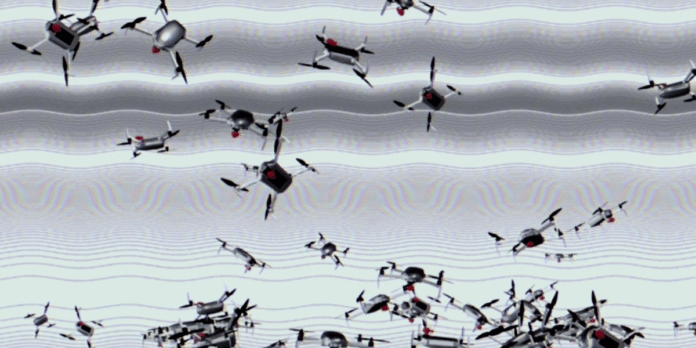As for value, every Military Leonidas unit at the moment runs within the “low eight figures,” Lowery advised me. Protection contract pricing might be opaque, however Epirus delivered 4 models for its $66 million preliminary contract, giving a back-of-napkin worth round $16.5 million every. For comparability, Stinger missiles from Raytheon, which troopers shoot at enemy plane or drones from a shoulder-mounted launcher, value tons of of 1000’s of {dollars} a pop, that means the Leonidas might begin costing much less (and preserve capturing) after it downs the primary wave of a swarm.
Raytheon’s radar, reversed
Epirus is a part of a brand new wave of venture-capital-backed protection firms attempting to alter the way in which weapons are created—and the way in which the Pentagon buys them. The biggest protection firms, companies like Raytheon, Boeing, Northrop Grumman, and Lockheed Martin, usually develop new weapons in response to analysis grants and cost-plus contracts, by which the US Division of Protection ensures a sure revenue margin to companies constructing merchandise that match their laundry listing of technical specs. These applications have stored the navy equipped with cutting-edge weapons for many years, however the outcomes could also be beautiful items of navy equipment delivered years late and billions of {dollars} over price range.
Relatively than constructing to minutely detailed specs, the brand new crop of navy contractors purpose to supply merchandise on a fast timeframe to unravel an issue after which fine-tune them as they pitch to the navy. The mannequin, pioneered by Palantir and SpaceX, has since propelled firms like Anduril, Defend AI, and dozens of different smaller startups into the enterprise of struggle as enterprise capital piles tens of billions of {dollars} into protection.
Like Anduril, Epirus has direct Palantir roots; it was cofounded by Joe Lonsdale, who additionally cofounded Palantir, and John Tenet, Lonsdale’s colleague on the time at his enterprise fund, 8VC. (Tenet, the son of former CIA director George Tenet, could have impressed the corporate’s identify—the elder Tenet’s mother and father had been born within the Epirus area within the northwest of Greece. However the firm extra usually says it’s a reference to the pseudo-mythological Epirus Bow from the 2011 fantasy motion film Immortals, which by no means runs out of arrows.)
Whereas Epirus is doing enterprise within the new mode, its roots are within the previous—particularly in Raytheon, a pioneer within the discipline of microwave expertise. Cofounded by MIT professor Vannevar Bush in 1922, it manufactured vacuum tubes, like these present in previous radios. However the firm grew to become synonymous with digital protection throughout World Struggle II, when Bush spun up a lab to develop early microwave radar expertise invented by the British right into a workable product, and Raytheon then started mass-producing microwave tubes—referred to as magnetrons—for the US struggle effort. By the tip of the struggle in 1945, Raytheon was making 80% of the magnetrons powering Allied radar internationally.

EPIRUS
Massive tubes remained one of the best ways to emit high-power microwaves for greater than half a century, handily outperforming silicon-based solid-state amplifiers. They’re nonetheless round—the microwave in your kitchen counter runs on a vacuum tube magnetron. However tubes have downsides: They’re sizzling, they’re massive, and so they require maintenance. (In truth, the opposite microwave drone zapper at the moment within the Pentagon pipeline, the Tactical Excessive-power Operational Responder, or THOR, nonetheless depends on a bodily vacuum tube. It’s reported to be efficient at downing drones in exams however takes up a complete delivery container and wishes a dish antenna to zap its targets.)
By the 2000s, new strategies of constructing solid-state amplifiers out of supplies like gallium nitride began to mature and had been in a position to deal with extra energy than silicon with out melting or shorting out. The US Navy spent tons of of tens of millions of {dollars} on cutting-edge microwave contracts, one for a venture at Raytheon referred to as Subsequent Technology Jammer—geared particularly towards designing a brand new option to make high-powered microwaves that work at extraordinarily lengthy distances.
Lowery, the Epirus CEO, started his profession engaged on nuclear reactors on Navy plane carriers earlier than he grew to become the chief engineer for Subsequent Technology Jammer at Raytheon in 2010. There, he and his workforce labored on a system that relied on lots of the similar fundamentals that now energy the Leonidas—utilizing the identical sort of amplifier materials and antenna setup to fry the electronics of a small goal at a lot nearer vary fairly than disrupting the radar of a goal tons of of miles away.


